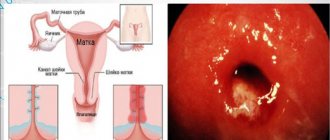Blood pressure (BP) usually decreases during physiological pregnancy. Due to a decrease in peripheral vascular resistance, blood pressure decreases in the second half of the first trimester of pregnancy and reaches its lowest level in the middle of the second trimester. During the third trimester, blood pressure usually increases, but it should not be higher than before pregnancy.
- Preeclampsia
- Acute fatty liver degeneration
- Eclampsia
- Chronic hypertension
- Preeclampsia associated with chronic hypertension
Classification . Hypertension may exist before pregnancy (chronic hypertension) or be caused by pregnancy: gestational hypertension (GG), preeclampsia and eclampsia.
Hypertensive conditions during pregnancy
- gestational hypertension (hypertension caused by pregnancy)
- preeclampsia
- severe preeclampsia
- eclampsia
- chronic hypertension
- chronic hypertension complicated by preeclampsia
- acute fatty liver degeneration
Liver involvement is rare in preeclampsia and is associated with two complications with a high risk of morbidity and mortality—acute fatty liver of pregnancy. Complications of hypertensive disorders during pregnancy remain one of the leading causes of maternal mortality in developing countries. Given that the pathogenetic treatment for these complications is delivery, they are also the leading cause of premature birth.
To define hypertensive disorders during pregnancy, domestic obstetricians and gynecologists use the term NPH-preeclampsia (edema, proteinuria and hypertension) and distinguish:
1) monosymptomatic gestosis: hypertension, proteinuria, dropsy;
2) preeclampsia (with a combination of any two of these three symptoms) - mild, moderate and severe;
3) combined gestosis (against the background of extragenital pathology - hypertension, chronic kidney disease, diabetes, etc.);
4) eclampsia.
Why does preeclampsia develop in pregnant women?
The most important reason for such complications is disturbances in placental function, which occur in the first weeks of pregnancy, in the first trimester.
Then it is necessary to act to prevent complications. And in later stages of pregnancy, the doctor is practically unable to change the situation for the better and is forced to make a difficult choice between prolonging pregnancy and early delivery. WATCH THE VIDEO
The placenta works as an endocrine organ: it releases into the blood some biologically active substances that are necessary for the normal course of pregnancy and fetal development. If too many of these substances are produced, they enter the bloodstream of the expectant mother and cause disturbances in her body.
For example, one such substance is soluble fms-like tyrosine kinase (sFlt-1). Entering the maternal bloodstream, it increases blood clotting, promotes vasoconstriction, damages their wall and increases permeability. Scientific studies have proven that elevated levels of sFlt-1 play an important role in the development of preeclampsia.
There are other theories. It is believed that the development of preeclampsia is facilitated by: systemic inflammation, immune dysfunction, the inability of a woman’s cardiovascular system to adapt to pregnancy, gestational diabetes, and a lack of certain nutrients, vitamins, and minerals.
Most often, preeclampsia develops during the first pregnancy in women under 20 and over 40 years of age.
Some risk factors are known:
- High blood pressure during previous pregnancies.
- Obesity.
- Preeclampsia during previous pregnancies.
- Multiple pregnancy.
- History of preeclampsia in close relatives: mother, sister.
- Some diseases in the anamnesis: rheumatoid arthritis, systemic lupus erythematosus, diabetes mellitus, kidney pathologies.
Pathological changes begin in the early stages of pregnancy, but symptoms and complications develop towards the end (after 20 weeks). When pronounced manifestations occur, practically nothing can be done. But there are now studies that help identify the risk of preeclampsia in the early stages and take some timely measures. This is why screening is so important.
Despite significant advances in modern obstetrics, preeclampsia (PE) is still one of the most common and severe complications of pregnancy [1, 2]. Depending on the socio-economic and ethnic composition of the population, it develops in 5-8% of pregnant women in the population [3, 4]. Moreover, PE is observed to the greatest extent in the healthiest and youngest group—primigravida women [5]. In multiparous women, this percentage decreases, but if such women become pregnant with a new partner, then the likelihood of her developing PE increases to the values of primigravidas [6]. This phenomenon has not yet been fully understood. Women who develop PE in their first pregnancy remain at high risk of developing it in subsequent pregnancies [6]. The likelihood of developing PE is also increased if the mother or grandmother of this woman suffered such a complication at one time [6]. The fact that the mother of the father of the unborn child has PE also increases the risk of developing PE during pregnancy in this man’s wife, which indicates possible genetic mechanisms for this condition [7].
In addition to genetic factors, the following pathologies increase the likelihood of developing PE: arterial hypertension before pregnancy, diabetes mellitus, inflammatory kidney diseases, obesity and hypercoagulable states (antiphospholipid syndrome) [8–10]. As the mother's age increases (over 35 years), the likelihood of her developing PE also becomes greater [11]. In addition, an independent risk factor for the development of PE is multiple pregnancy [12].
Clinical characteristics of pregnant women with preeclampsia
The main clinical signs of PE are arterial hypertension with a diastolic blood pressure level of more than 90 mm Hg, proteinuria with a daily protein loss of more than 300 mg. Previously, in addition to these phenomena, edema was included in the so-called diagnostic triad. However, this sign is now considered nonspecific, and therefore many researchers have excluded it from being a significant diagnostic sign. However, the rapid appearance of severe swelling of the hands and face often leads the doctor to assume the presence of PE and examine the patient more carefully. Preeclampsia most often develops after the 20th week of pregnancy, but in some cases it can manifest itself immediately before and even after childbirth.
It has been shown that the amount of protein lost in the urine does not correlate with the severity of PE [13]. Thus, it has been demonstrated that 10% of women with clinical manifestations of PE have minimal proteinuria, and 20% have no proteinuria [14]. In many pregnant women with PE, against the background of decreased glomerular filtration, the oncotic pressure of the blood plasma turned out to be normal [15]. Severe clinical complications of PE may include renal failure, placental abruption, seizures, pulmonary edema, acute liver injury, hemolysis and thrombocytopenia. The last three manifestations are often observed simultaneously and constitute the so-called HELLP syndrome [16, 17]. Currently, this syndrome is considered a severe variant of PE and is associated with a high risk of fatal outcomes for the mother and fetus [17, 18].
Although the main symptoms of PE (hypertension and proteinuria) quickly disappear after childbirth, current epidemiological studies indicate that this condition has serious long-term consequences for the functioning of the cardiovascular system of women [19]. Approximately 20% of patients who have undergone PE develop arterial hypertension and microalbuminuria within 7 years after birth [19]. With increasing age, the long-term risk of developing cardiovascular and cerebrovascular pathologies in such women doubles compared to those who have not suffered PE [20]. PE has been shown to be a significant risk factor for the development of severe renal failure requiring permanent dialysis or kidney transplantation [21]. As shown above, obesity is a risk factor for the development of P.E. At the same time, preeclampsia itself also acts as a risk factor for the subsequent development of obesity, diabetes mellitus and metabolic syndrome [22]. The question of whether PE is the cause of cardiovascular and metabolic complications or whether previous endothelial dysfunction determines both the pathological course of pregnancy and the long-term consequences of PE is still unclear.
Pathogenesis of preeclampsia
Over the past decade and a half, studies have been conducted that significantly expand our understanding of the pathogenesis of PE, in which the placenta plays a central role. Preeclampsia occurs only in the presence of a placenta and resolves soon after birth. It turned out that the presence of a fetus is not at all necessary for the development of PE [23]. A detailed study of observations when PE continues after the birth of a child has shown the presence of residual fragments of the placenta in the uterus of such women. Curettage performed after this was accompanied by rapid disappearance of the symptoms of PE [24]. Severe cases of PE are usually associated with hypoperfusion or ischemia of the placenta. Morphological studies of the placentas of postpartum women with PE showed the presence of acute atherosis, foci of necrosis, diffuse damage and obstruction of placental vessels, thickening of their intima, deposition of fibrin in the vascular wall and damage to the endothelium [25]. Frequent morphological findings are placental infarctions as a result of occlusion of the spiral arteries [25]. Ultrasound examination showed a significant decrease in uteroplacental blood flow, preceding the clinical manifestations of PE [26]. Morphological and ultrasound changes correlated with the severity of the clinical picture of PE [25].
During normal placentation, the extravillous fetal cytotrophoblast invades the spiral arteries of the myometrium. As a result, cytotrophoblast cells replace endothelial cells and the muscular layer of the wall of the spiral arteries, transforming them from narrow vessels with high resistance into wide vessels that lose the ability to respond with spasm to the action of vasoactive agents [27]. This remodeling of the spiral arteries ensures adequate perfusion of the placenta, capable of satisfying the fetal demands that increase during pregnancy. Insufficient transformation and remodeling of spiral arteries during the development of PE have been shown [28, 29]. In this case, cytotrophoblast invasion appears to be significantly limited by superficial decidual cells, as a result of which the segment of spiral arteries passing through the portion of the myometrium adjacent to the placenta does not undergo the necessary transformation [30]. There is a point of view that during normal placentation, cytotrophoblast cells acquire endothelial properties during a process called pseudovasculogenesis or vascular mimicry [31]. This is expressed in the inhibition of the expression of adhesion molecules of cytotrophoblast cells, which by their nature belong to epithelial cells, and the expression of adhesion molecules characteristic of the phenotype of endothelial cells [31]. With P.E. This replacement of cell surface molecules does not occur, which prevents adequate invasion of the spiral arteries [32].
Modern studies [33-35] show that vascular endothelial growth factors (VEGF) play an important role in the process of regulating the development of placental vessels. An imbalance between pro- and antiangiogenic growth factors is of great importance in the processes of cytotrophoblast invasion in PE. Mice with genetically induced damage to these factors demonstrated impaired placental vasculogenesis and increased fetal mortality. Immunohistochemistry methods have shown significant changes in the expression of VEGF, placental growth factor (PlGF) and antiangiogenic factor (Flt-1) in the placentas of women with P.E. Soluble antiangiogenic factor (sFlt-1) reduces the rate of cytotrophoblast invasion, while its concentration is relatively low at the beginning of pregnancy, but begins to increase in the third trimester. This may reflect the completion of placental vasculogenesis at the end of pregnancy. Approximately the same dynamics at the end of pregnancy are observed in relation to another antiangiogenic factor, endoglin.
Although the placenta appears to play a significant causal role in the occurrence of PE, one of the target organs is the maternal endothelium [36]. A large number of plasma markers of endothelial activation and dysfunction are dysregulated in women with PE, including von Willebrand antigens, fibronectin, soluble E-selectin, and endothelin. Incubation of endothelial cells in blood plasma obtained from women with PE leads to dysfunction of these cells [33]. It is assumed that vasoactive agents circulating in the blood, the source of which is the placenta, affect the endothelium of the blood vessels of the brain, kidneys, and maternal cardiovascular system [36].
Physiological changes in a woman’s body during pregnancy are accompanied by a decrease in peripheral vascular resistance and an increase in cardiac output. With P.E. the opposite picture is observed: systemic vasoconstriction, increased peripheral vascular resistance and decreased cardiac output [37]. Moreover, with PE, the sensitivity of vascular smooth muscle cells to vasopressors (angiotensin II and norepinephrine) increases [38]. In such women, the response of the endothelium to vasodilating endothelial factors is reduced [39]. Moreover, such reactions are observed before the clinical symptoms of PE in the form of arterial hypertension and proteinuria [11].
Kidney damage in PE is one of the most striking manifestations of endothelial dysfunction. As early as 1959, significant morphological changes in the glomerular apparatus of the kidneys were described, expressed in swelling and vacuolization of nephron endothelial cells and fibrin deposition in the endothelium, which gave rise to the term “glomerular endotheliosis” [40]. Electron microscopic studies showed the disappearance of fenestration of the glomerular epithelium [15]. Unlike many kidney diseases, in PE nephron endothelial cells are the primary target of injury. Although glomerular endotheliosis is considered a pathognomonic condition for PE, the initial manifestations of this pathology of the renal endothelium are noted already in the initial stages of PE or pregnancy-induced arterial hypertension [41].
Cerebral edema and parenchymal hemorrhages of brain tissue are a common pathological finding in women who died from eclampsia [18]. However, the presence of cerebral edema does not correlate with the presence of hypertension. This likely indicates that cerebral edema is most likely the result of endothelial dysfunction rather than a direct increase in hydrostatic pressure in the cerebral capillaries [42]. Studies conducted in women with PE using computed tomography and magnetic resonance imaging demonstrate a picture consistent with hypertensive encephalopathy with signs of vasculogenic edema and infarctions in the subcortical areas of the brain [43].
An imbalance in the synthesis of pro- and antiangiogenic factors likely plays a key role in the pathogenesis of P.E. An increase in the expression of soluble fms-like tyrosine kinase 1 (sFlt-1), an associated decrease in the synthesis of placental growth factor and a change in the synthesis of VEGF are among the most striking signs of an imbalance in the production of endothelial factors [44, 45]. VEGF stabilizes vascular endothelial cells and is particularly important for maintaining endothelial function in the kidneys, liver and brain. VEGF interacts with two main receptors: Flk and Flt-1. A variant of the membrane-bound VEGF receptor (often referred to as VEGFR1) is sFlt-1, which has an antiangiogenic effect [46]. The soluble antiangiogenic factor sFlt-1 is secreted mainly by syncytiotrophoblast into the maternal circulation [46]. The sFlt-1 factor is able to bind both VEGF and PlGF and prevents these growth factors from interacting with the corresponding receptors [47]. With P.E. There is an increase in the expression of sFlt-1, which correlates with the clinical manifestations of the pathology [48, 49]. in vitro experiments
addition of sFlt-1 to the perfusion solution causes vascular constriction. Exogenous administration of sFlt-1 to pregnant rats causes the development of a syndrome resembling PE with symptoms of hypertension, proteinuria, and glomerular endotheliosis [45]. Nephron podocytes have been shown to synthesize VEGF [50]. In this case, pharmacological blocking of VEGF synthesis in animals causes damage to the nephron endothelium with the development of proteinuria [51]. In experimental glomerulonephritis caused in animals, VEGF is a necessary component for the restoration of renal capillaries and maintenance of fenestrated endothelial function [52, 53]. It should be noted that fenestrated endothelium, in addition to nephrons, is found in hepatocytes of the hepatic sinuses. The liver is also a target organ affected in P.E. Thus, deficiency of VEGF synthesis can be considered one of the most important factors in the pathogenesis of PE.
The physiological role of PlGF is still less clear, but this growth factor stimulates angiogenesis under conditions of ischemia, inflammation, and mechanical tissue damage [54]. PlGF is able to enhance the effects of VEGF. Modeling the state of PE in rats is possible only by inhibiting both of these growth factors [45]. A number of other angiogenic factors are currently being intensively studied. Thus, the content of endostatin, an angiogenesis inhibitor, is also increased in the blood plasma of women with PE [55]. Another antiangiogenic factor, the soluble form of endoglin (sEng), is actively synthesized at the initial stages of P.E. development. A high level of expression of endoglin itself was noted in syncytiotrophoblast and cytotrophoblast, which are involved in the invasion of spiral arteries [56]. With P.E. a high level of endoglin synthesis was noted [56]. sEng is able to enhance vascular damage induced by sFlt-1 in pregnant rats [33].
There is still no consensus on whether insufficient cytotrophoblast invasion and the associated disruption of spiral artery remodeling is the cause or consequence of placental hypoxia. Experiments in primates have shown that artificial stenosis of the uterine arteries leads to hypertension and proteinuria [57, 58]. However, such models failed to obtain significant changes in cerebral circulation and seizures, as well as changes similar to HELLP syndrome [57, 58]. The participation of placental hypoxia in the development of PE is evidenced by the fact that in the population of pregnant women living in high mountain areas, where the partial pressure of oxygen in the inspired air is significantly lower, the frequency of PE exceeds the corresponding figure in women living at sea level by 2-4 times [ 59]. It has been shown that high-altitude residents have increased plasma levels of placental hypoxia-inducible factor (HIF) [60]. Approximately the same increase in the content of this factor was noted in the blood plasma of women with PE [60]. It has been shown that HIF itself can alter the synthesis of a large number of pro- and antiangiogenic factors, including VEGF, PlGF, VEGFR-1 [60]. In addition, HIF is able to influence the rate of cytotrophoblast invasion [61]. Experimental hypoxia of mouse placentas stimulates the synthesis of antiangiogenic factors [62].
In addition to all of the above, changes in the activity of the renin-angiotensin-aldosterone system (RAAS) are observed in PE. During the development of normal pregnancy, the synthesis of all these hormones is increased [63]. With P.E. the response of the vascular wall to angiotensin II and other vasoconstrictors increases [63]. At the same time, the synthesis of aldosterone in women with PE is reduced [64].
Clinical implications of studying the pathogenesis of preeclampsia
Although unified preventive and treatment strategies have not yet been developed for the management of patients with PE, clinical experience indicates a significant positive effect for both the mother and the fetus of early detection and monitoring of PE and supportive therapy for this pathology [2]. It has been shown that assessing the levels of circulating pro- and antiangiogenic factors allows, in some cases, to predict the onset of PE within a few weeks [65]. First of all, this concerns the assessment of plasma concentrations of sFlt-1 and sEng, an increase in which is observed 5-8 weeks before the clinical manifestation of PE [66]. The ratio of these antiangiogenic factors to the concentration of PlGF is regarded as one of the best markers of the onset of PE [65]. In this case, PlGF can be assessed not only in blood, but also in urine [66]. Another potentially informative marker for the development of PE is placental protein 13 (PP13), an increase in the concentration of which can be recorded already in the first trimester of pregnancy [67]. This dependence is empirical, since a pathogenetic connection between PP13 and angiogenic factors has not yet been identified [67].
No radical treatment for PE, other than termination of pregnancy and removal of the placenta from the woman’s body, has yet been proposed. The ideas of treating PE using synthesized vascular endothelial growth factors, one of which is VEGF-121, seem potentially promising [68]. Using this drug, it was possible to reduce arterial hypertension and stop the development of proteinuria in rats with PE modeled using sFlt1 [68]. However, these studies have not yet extended beyond animal experiments. Evidence has been obtained of a decrease in sFlt1 production under the influence of statins in animal experiments [69]. But the clinical use of statins in obstetric practice is limited by their potential teratogenic effect.
Thus, thanks to studies of the role of pro- and antiangiogenic growth factors, our knowledge of the pathogenesis of PE has expanded significantly. However, further research is needed to search for informative markers of changes in the synthesis of these agents and to develop effective methods for early prediction and monitoring of preeclampsia.
The authors declare no conflict of interest.
Preeclampsia and eclampsia
According to the Russian Ministry of Health, preeclampsia and other pregnancy complications associated with high blood pressure have ranked fourth among the causes of maternal mortality over the past ten years.
Preeclampsia is one of the most common causes of premature birth, fetal growth retardation, and antenatal fetal death. It often becomes an indication for caesarean section. Possible complications of preeclampsia: placental abruption and stillbirth, stroke, heart failure, pulmonary edema, reversible blindness, hemorrhage in the liver, HELLP syndrome, acute renal failure. When severe symptoms have already arisen, the only way to save mother and child is to carry out surgical delivery as early as possible. But manifestations can persist for another 1–6 weeks after the baby is born. Even after childbirth, preeclampsia has serious consequences for the health of mother and baby. A woman's risk of obesity, arterial hypertension, diabetes, coronary heart disease, and stroke increases. The child has an increased risk of hormonal, cardiovascular disorders, and diseases associated with metabolic disorders.
A dangerous complication of preeclampsia is eclampsia . This condition manifests itself in the form of seizures, and it can occur even if the symptoms of preeclampsia are mild or completely absent.
It is difficult to say exactly who will develop preeclampsia. If a woman is completely healthy and has no risk factors, this does not mean anything. Preeclampsia can develop in any woman during any pregnancy.
The risk of developing PE in pictures
Sources
- Pristrom, A. M. Arterial hypertension in pregnant women: diagnosis, classification, clinical forms: textbook / A. M. Pristrom. - Minsk, 2011. - 103 s.
- Hypertensive disorders during pregnancy, childbirth and the postpartum period. Preeclampsia. Eclampsia: federal clinical guidelines / G. T. Sukhikh [et al.]. - Moscow, 2013. - 85 p.
- Pristrom, A.M. Differentiated drug therapy of arterial hypertension in pregnant women / A.M. Pristrom, A.G. Mrochek // Modern aspects of the prevention, diagnosis and treatment of arterial hypertension: materials of the IV International. scientific-practical conf. – Vitebsk, 2007. – P. 115-119
- Hypertensive disorders during pregnancy, childbirth and the postpartum period. Preeclampsia. Eclampsia: federal clinical guidelines / G. T. Su-khikh [et al.]. - Moscow, 2013. - 85 p.
- Antiperovich, T.G. Acute cerebrovascular pathology during pregnancy and after childbirth: a retrospective analysis of maternal mortality cases / T.G. Antiperovich, O.A. Peresada, A.V. Astapenko // Med. news. – 2005. – No. 1. – P. 88-91.
HOW TO ASSESS THE RISK?
Three steps
Ultrasound
BLOOD
CONSULTATION
Timely detection and treatment helps up to 90% of pregnant women. Get screened now:
+7 (495) 514-00-11
Currently, there are special diagnostic programs that help to promptly detect that the formation of placental function is not occurring correctly. Examinations can be carried out in the first trimester and even before pregnancy.
In accordance with international recommendations and Russian screening programs, the following diagnostic methods are used to identify a high risk of preeclampsia:
- Ultrasound of the fetus, placenta and Doppler ultrasound of the uterine arteries. The examination must be performed by a physician who is certified by the FMF (Fetal Medicine Foundation). Ultrasound in screening for PE
- Blood test for hCG Blood test for hCG (human chorionic gonadotropin) - an increase of more than 3 MoM in the first or second trimester. Myths and misconceptions about prenatal screening.
- Blood test for PAPP-A (pregnancy-associated plasma protein A). A decrease in its level indicates an increased risk of preeclampsia. WATCH THE VIDEO
- Blood test for inhibin A – increased levels in the 1st–2nd trimester.
- Blood test for PLGF (placental growth factor). If there is a high risk of preeclampsia, PIGF levels decrease at 13–16 weeks of pregnancy. Analysis for it can be carried out already in the first trimester.
- Blood test for sFlt-1 and PLGF. This relationship can be examined after the 20th week of pregnancy. Approximately 5 weeks before the onset of the first signs of preeclampsia, sFlt increases. If the risk of preeclampsia is high, PIGF will be reduced and sFlt will be increased. Very detailed for specialists
- A blood test for AFP (alpha fetoprotein) - an increase in the level in the second trimester, which cannot be explained by other reasons.
It is important to understand that no single study can help predict the risk of preeclampsia during pregnancy. Screening examinations include different tests, and their results must be assessed in combination. In some cases, an extensive examination is required - this can be done at our Center for Immunology and Reproduction.
Before pregnancy, a number of studies are carried out related to genetic predisposition to placental dysfunction.
- Polymorphism of genes of the hemostasis system.
- Polymorphism of vascular tone genes.
- Antiphospholipid antibodies.
Order of the Ministry of Health of the Russian Federation No. 572n dated November 1, 2012 “On approval of the procedure for providing medical care in the field of obstetrics and gynecology (except for the use of assisted reproductive technologies)” requires expectant mothers to undergo an ultrasound and be tested for PAPP-A, hCG for a period of 11– 14 weeks pregnant . In some regions of Russia and Western countries, three analyzes are carried out, and PLGF is added to the list. This test is called the first trimester triple test.
Description
Preeclampsia (ICD10 code: O14 Pregnancy-induced hypertension with significant proteinuria) is a pathological, pregnancy-specific condition of a woman that develops in the second half of pregnancy (after 20 weeks) and is characterized by arterial hypertension, an increase in the amount of protein in the urine, edema, and multiple organ failure.
The prevalence of preeclampsia in the world averages 0.9-3%. In Russia, this figure is higher and ranges from 12-17% of the total number of pregnancies.
The main factor determining the presence of the disease is the immunological conflict of the mother with the fetus and the fetal part of the placenta. In the first trimester of pregnancy, the trophoblast (the prototype of the placenta) does not fully grow into the uterine tissue. In the future, this entails underdevelopment of the placenta, as a result, the amount of uteroplacental blood flow decreases. As a result, by the 20th week of pregnancy, oxidative stress of the placenta is established. This condition is characterized by an increase in oxidants due to prolonged hypoxia (mainly oxygen superoxide) and a relative or absolute decrease in antioxidants.
An imbalance of oxidants and antioxidants is followed by the oxidation of proteins, lipids and the release of oxidation products into the maternal bloodstream. These products affect the function of the endothelium, which covers the inside of blood vessels. As a result, platelets and leukocytes “stick” to the endothelium. This condition leads to dysfunction of blood vessels, their narrowing, a decrease in circulating blood, and an increased risk of developing disseminated intravascular coagulation syndrome.
Preventing preeclampsia
If symptoms of preeclampsia have already arisen, the expectant mother is admitted to a hospital and prescribed bed rest, medications to lower blood pressure, glucocorticosteroids, and anticonvulsants (in severe cases).
All this only helps to improve the condition somewhat; the only way to get rid of preeclampsia is childbirth. For women at high risk, there are effective prevention options:
- Low dose aspirin (75 mg daily). Treatment begins from the earliest stages of pregnancy or even before conception and continues until childbirth. Aspirin for prevention
- In some cases, therapy is supplemented with heparin drugs. Curantil (dipyridamole) is not prescribed for the prevention of preeclampsia. Why?
With proper aspirin prophylaxis, the risk of preeclampsia is greatly reduced. For example, there is evidence that 150 mg of aspirin daily from 11–14 to 34 weeks of pregnancy reduces the risk of early preeclampsia by 60%, before 34 weeks by 80%, and before 32 weeks by 90%. It is in the early stages of pregnancy that preeclampsia is especially dangerous, because the question may arise about the need for an early delivery, while the baby’s body has not yet matured and is not ready to be born.
WATCH THE VIDEO
Folk remedies
At the first appearance of symptoms (swelling of the legs, increased blood pressure) closer to the 20th week of pregnancy, you should immediately consult a specialist.
For effective treatment and preservation of the fetus, you must follow the treatment prescribed by your doctor. Taking medicinal herbs and traditional medicine for mild preeclampsia is not prohibited, but this can only be done with the permission of the attending physician to correct the selected additional therapy.
Hawthorn fruits, cornflower flowers, and motherwort infusion are used as means to help normalize blood pressure. When grade 1 edema (edema of the lower extremities) appears, the use of diuretic herbal medicine is allowed: artichoke, birch leaves, corn silk, burdock. As an auxiliary therapy, sedatives (mint, valerian, motherwort, lemon balm, fireweed), as well as antihopixant herbs and fruits (dried apricots, plums, birch leaves, lemon balm, linden) are used.
The information is for reference only and is not a guide to action. Do not self-medicate. At the first symptoms of the disease, consult a doctor.
Examples of diagnosis and treatment of preeclampsia
We bring to your attention two real clinical cases of women who were examined and treated during pregnancy for preeclampsia in our Center for Immunology and Reproduction:
Babak Tatyana Aleksandrovna
Obstetrician-gynecologist, gynecologist-endocrinologist, hemostasiologist
1 case
Since February 2021, at 6–7 weeks of pregnancy, Margarita V., born in 1984, has been observed in our clinic.
The woman's obstetric and gynecological history is not burdened. An initial examination carried out at 8–9 weeks revealed an increase in D-dimer levels. In this regard, the patient is recommended to undergo further examination for thrombophilic factors. Polymorphisms of the hemostasis system genes were identified: homozygous for the fibrinogen gene, ITGA2 gene, PAI 1, heterozygous for the MTHFR gene. Homocysteine levels are normal. Our doctors suggested testing for polymorphisms of vascular tone genes and antiphospholipid antibodies, but the patient refused.
Results of the first and second biochemical screening:
- First screening: low level of placental growth factor (0.41).
- Second screening: free estriol level 0.61.
From 11-12 weeks, the patient receives ThromboAss 100 mg and Clexane 0.2 ml subcutaneously once a day. Doppler ultrasound at 20–21 weeks of pregnancy revealed a degree 1a disturbance of blood flow in the uterine arteries. According to the hemostasiogram, the level of D-dimer is periodically increased. At 19-20 weeks, the level of sFlt 1 is sharply increased. At the moment, the patient continues to be monitored, our doctors are monitoring the pregnancy.
The examination revealed an increased risk of preeclampsia, and thanks to this, our doctors began to carry out prevention from the first trimester. We expect that this will help reduce the likelihood that a patient will require delivery too early due to preeclampsia.
Babak Tatyana Alexandrovna
Obstetrician-gynecologist, gynecologist-endocrinologist, hemostasiologist
Case 2
In June 2021, at a period of 5–6 weeks of pregnancy, Tatiana L., born in 1988, contacted the CIR.
This is the woman’s first pregnancy and her obstetric and gynecological history is not burdensome. Analysis at 11–12 weeks revealed a slight increase in D-dimer levels. At the same time there was scanty bleeding from the vagina.
Biochemical screening results:
- First screening: no abnormalities (PAPPa level, PLGF - 0.9-1.0).
- Second screening: normal again (placental hormones in the region of 1-1.5).
During an ultrasound from week 20, a degree 1a disturbance of blood flow in the uterine arteries was detected. Our doctors prescribed the woman TROMBOASS 100 mg/day. from 21 weeks. Next, Clexane 0.2 ml/day was added to it. from 28 weeks.
At 36 weeks, an ultrasound was performed, which showed stage 1 intrauterine growth retardation syndrome (IUGR). From 37 weeks, the patient’s blood pressure began to increase to 140/90 mm. Hg Art., protein was detected in the urine (proteinuria).
At 37–38 weeks of pregnancy, according to indications (due to FGR and acute fetal hypoxia), an emergency cesarean section was performed. A boy was born with a body weight of 2540 grams and a body length of 48 cm. Now everything is fine with the child, he is developing normally.
In this example, the timely identified risk of preeclampsia and preventive measures helped maintain the pregnancy until the maximum possible period in this case, allowing the child’s body to mature so that he was ready to be born.
Medicines
Photo: d-russia.ru
Calcium channel blockers (mostly mixed-action). Drugs in this group inhibit the flow of calcium into cardiomyocytes (muscle cells of the heart) and into smooth muscle cells (SMCs, muscles in blood vessels). Because of this, peripheral vessels dilate. This reduces blood pressure, total peripheral vascular resistance, and afterload on the heart. The coronary vessels (which supply blood to the heart) also dilate and bring more oxygen to the cardiomyocytes. The drugs slightly reduce cardiac contractility, and at the same time, oxygen demand and afterload decrease. Contraindications: arterial hypotension, heart failure, collapse, cardiogenic shock, hypersensitivity to the drug (allergy).
Beta1-blockers . The effect of drugs in this group is to reduce the activity of the sympathetic nervous system and circulating catecholamines in the heart. Due to this, the heart rate decreases, due to a decrease in stroke volume and minute blood flow, blood pressure and total peripheral vascular resistance are reduced. Contraindications: atrioventricular block of 2 and 3 degrees, sinoatrial block, arterial hypotension, bradycardia, chronic and acute heart failure, cardiogenic shock, hypersensitivity to the drug (allergy).
Centrally acting antihypertensives . The effect is achieved by the action of drugs (or their metabolites) on the receptors of the vasomotor center in the medulla oblongata. As a result, sympathetic activity on the vessels decreases. The hypotensive effect is mainly due to a decrease in total peripheral vascular resistance. Heart rate and cardiac output are slightly reduced. Contraindications: acute and chronic liver diseases, kidney diseases, pheochromocytoma, depression, taking drugs that depress the central nervous system, parkinsonism, hypersensitivity to the drug (allergy).
Severity
The likelihood of a risk to the health and life of the expectant mother and fetus depends on the characteristics of the main signs of preeclampsia.
Light degree:
- blood pressure – 140-150/90-100 mm Hg. Art.;
- protein in urine – up to 1 g/l;
- swelling of the legs.
Moderate:
- blood pressure – 150-170/110 mm Hg. Art.;
- protein in urine – 5 g/l;
- creatinine in the blood – 100-300 µmol/l;
- swelling on the anterior abdominal wall and arms.
Severe degree:
- blood pressure – 170/110 mm Hg. Art.;
- protein in urine – more than 5 g/l;
- creatinine in the blood – more than 300 µmol/l;
- swelling of the nasal and facial mucosa;
- changes in vision and abdominal pain.










